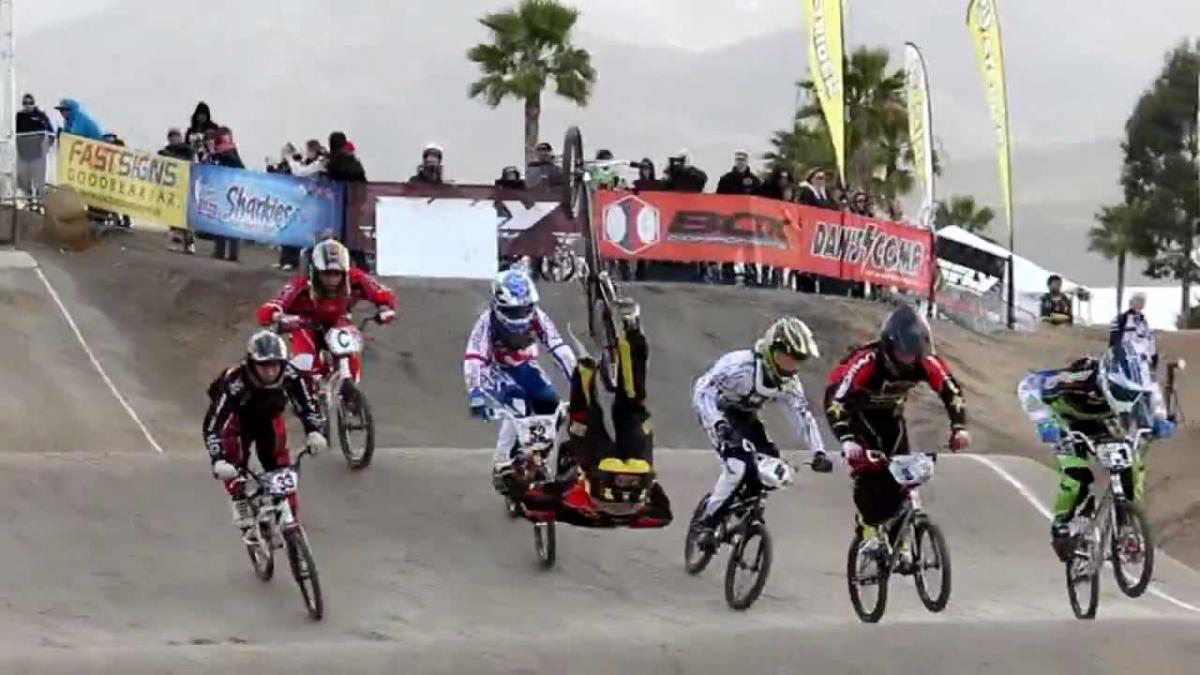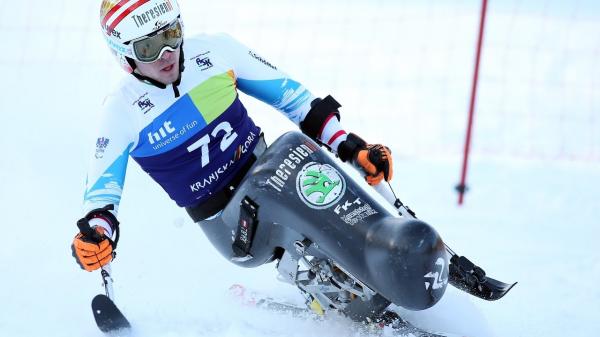BMX

BMX (bicycle motocross) bikes appeared in the early 1970s as an offshoot of motocross. They were designed for racing on dirt tracks replete with tight turns, berms, and jumps. BMX bikes are durable, with 20-inch- (51-cm-) diameter wheels mounted on a small frame. There is a single speed, the seat is low, and the handlebars are high. These traits make the BMX an extremely maneuverable bike, and it moved off the tracks and became popular on suburban and city streets. BMX-type bikes are used for freestyle riding, which emphasizes acrobatics rather than racing. There are several other variants of the standard bicycle. Recumbent frames allow the rider to sit low to the ground in a slightly reclined position, with the legs driving cranks attached to a horizontal tube. Recumbents are often recommended for riders who are uncomfortable on traditional bicycles. There is no standard design, but the wheelbase is usually extended and the front wheel reduced in size. The design reduces wind resistance. Other variations include the tricycle, which has two rear wheels for increased stability and typically is used by small children and the elderly; the tandem bicycle, in which two riders sit one behind the other, the front rider steering; and stationary exercise bicycles. Basic components Frame Bicycle frame tubing is usually made of low-carbon steel. Better-quality bicycle frames use aluminum or chromium-molybdenum alloy steel. More expensive materials, such as titanium and carbon-fibre composites, also are used. The most common design is the traditional diamond frame, which is formed by two triangles of tubing. The main triangle consists of the top tube, the seat tube, and the down tube. The rear triangle consists of the seat tube, chain stays, and seat stays. The seat post and saddle fit on top of the seat tube. The bottom bracket holds the spindle and the cranks. The right crank carries the chainwheel (or chainwheels). The head tube holds the steering forks, the stem, and the handlebars. The step-through, or lady’s frame, has a lower top tube. Full-suspension mountain bikes use a different frame design with a pivoted rear triangle to provide rear wheel movement. There is no standard design. Bicycle frame tubing is usually made of low-carbon steel. Better-quality bicycle frames use aluminum or chromium-molybdenum alloy steel. More expensive materials, such as titanium and carbon-fibre composites, also are used. The most common design is the traditional diamond frame, which is formed by two triangles of tubing. The main triangle consists of the top tube, the seat tube, and the down tube. The rear triangle consists of the seat tube, chain stays, and seat stays. The seat post and saddle fit on top of the seat tube. The bottom bracket holds the spindle and the cranks. The right crank carries the chainwheel (or chainwheels). The head tube holds the steering forks, the stem, and the handlebars. The step-through, or lady’s frame, has a lower top tube. Full-suspension mountain bikes use a different frame design with a pivoted rear triangle to provide rear wheel movement. There is no standard design. Wheels Bicycle wheels have a rim to retain the tire, a ball-bearing hub, and spokes between hub and rim. Spokes are made of steel wire, laced tangentially and kept under tension by threaded nipples in the rims that are adjusted to keep the rim straight (true). Hub axles are held in the frame either by nuts or by a cam-action (quick-release) lever. Rim diameters vary from 14 to 27 inches (36 to 69 cm), with the standard mountain bike rim being 26 inches and the standard road rim being 27 inches. Rim widths vary from 3 / 4 inch to 1 1 / 2 inches (2 to 4 cm). The rim cross section depends on the tire pressure and the brake type. Straight-side rims rely on the tire’s steel bead for retention. Hooked-edge rims rely on air pressure to hold the tire bead under the lip of the rim. Quality rims are extruded from aluminum alloy, and inexpensive rims are made from chrome-plated steel. Tubular rims are used with tubular racing tires, which are glued to the rim. Tires with wire beads are called clinchers, though the proper technical name is wired-on or hook-bead. Clincher tires have a wearing surface of synthetic rubber vulcanized onto a two-ply cotton or nylon casing. Air pressure is contained by a butyl rubber inner tube with either a Presta or a Schrader valve. Schrader valves are identical to automobile tire valves; Prestas are unique to bicycles. Drivetrain Inventors have developed a variety of methods to transmit power from the rider’s legs to the bicycle, but none can compete with the high efficiency, reliability, and low cost of chain drives. Derailleurs and internal hub gears are devices that allow riders to match pedaling speed (cadence) to changing terrain. The rear derailleur moves the chain from one rear sprocket to the next. The front derailleur moves the chain from one front chainwheel to the next. By varying the size of the sprockets and chainwheels, the rear wheel can turn faster or slower than the crank. Modern bicycles have up to 10 sprockets on the rear freewheel and 3 chainwheels on the crank, providing a theoretical maximum of 30 different gear ratios. The rear derailleur includes a spring-loaded pulley to take up chain slack. In the 1990s simple levers for shifting were replaced by trigger and twist-grip mechanisms that precisely positioned the derailleurs in the centred positions and thereby reduced the skill required for shifting gears. Rear internal hub gears are available with 2, 3, 4, 5, 7, and 14 speeds. They are slightly less efficient than derailleurs. Brakes Utility bicycles usually use a coaster brake inside the rear hub. The brake is activated by backpedaling. In developing countries rod brakes are often used. Rods connect the handlebar levers to stirrups that pull pads of friction material against the inside of the rim. Front and rear brakes on other bikes are actuated by cables connected to a brake lever on each handlebar. Caliper brakes squeeze two pads against the sides of the rim. Drum brakes that force two arcs of friction material against the inside of a steel drum on the hub are less common. Disc brakes have been designed for mountain bikes. They squeeze against a metal disc located near the hub instead of against the rims.














